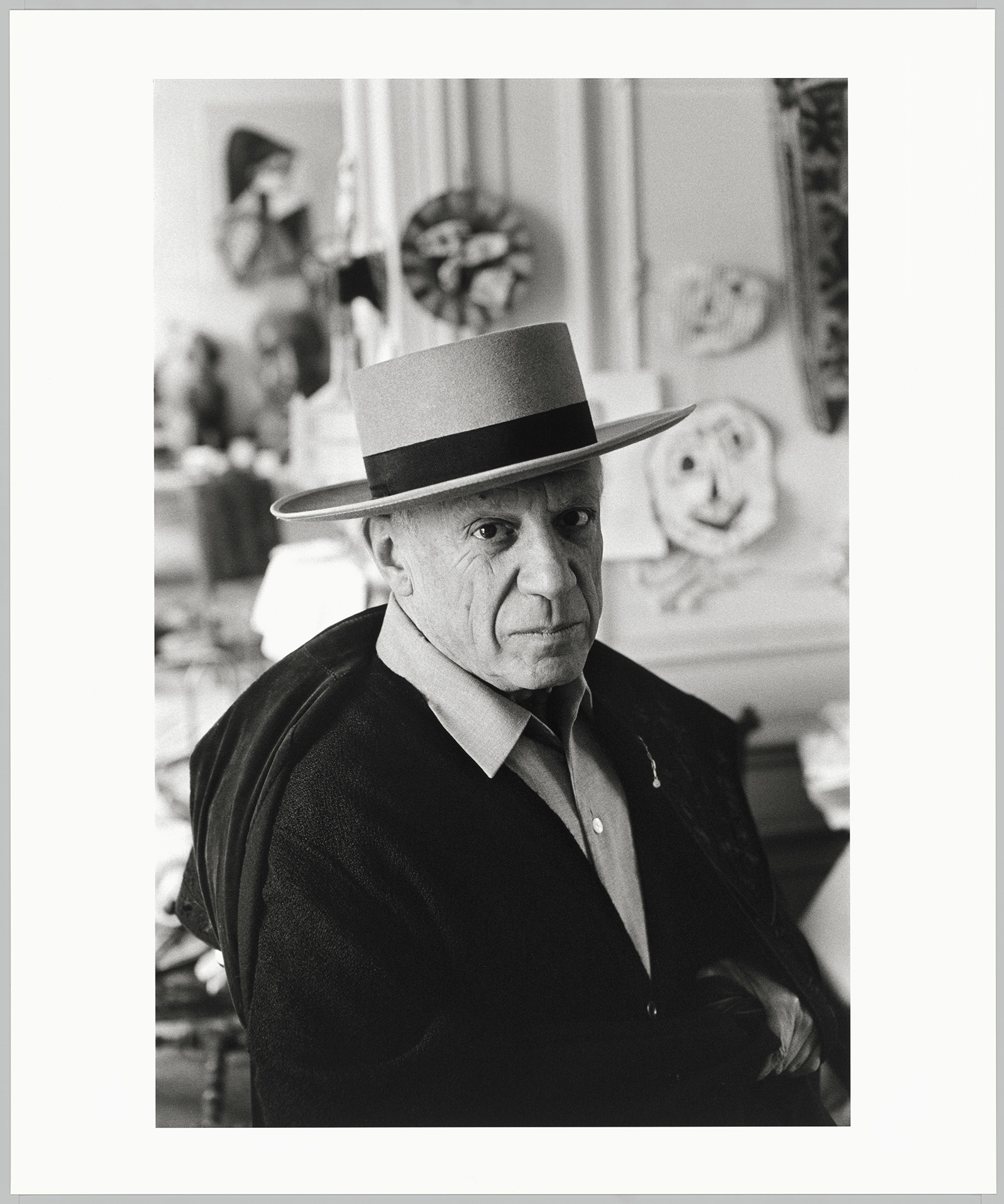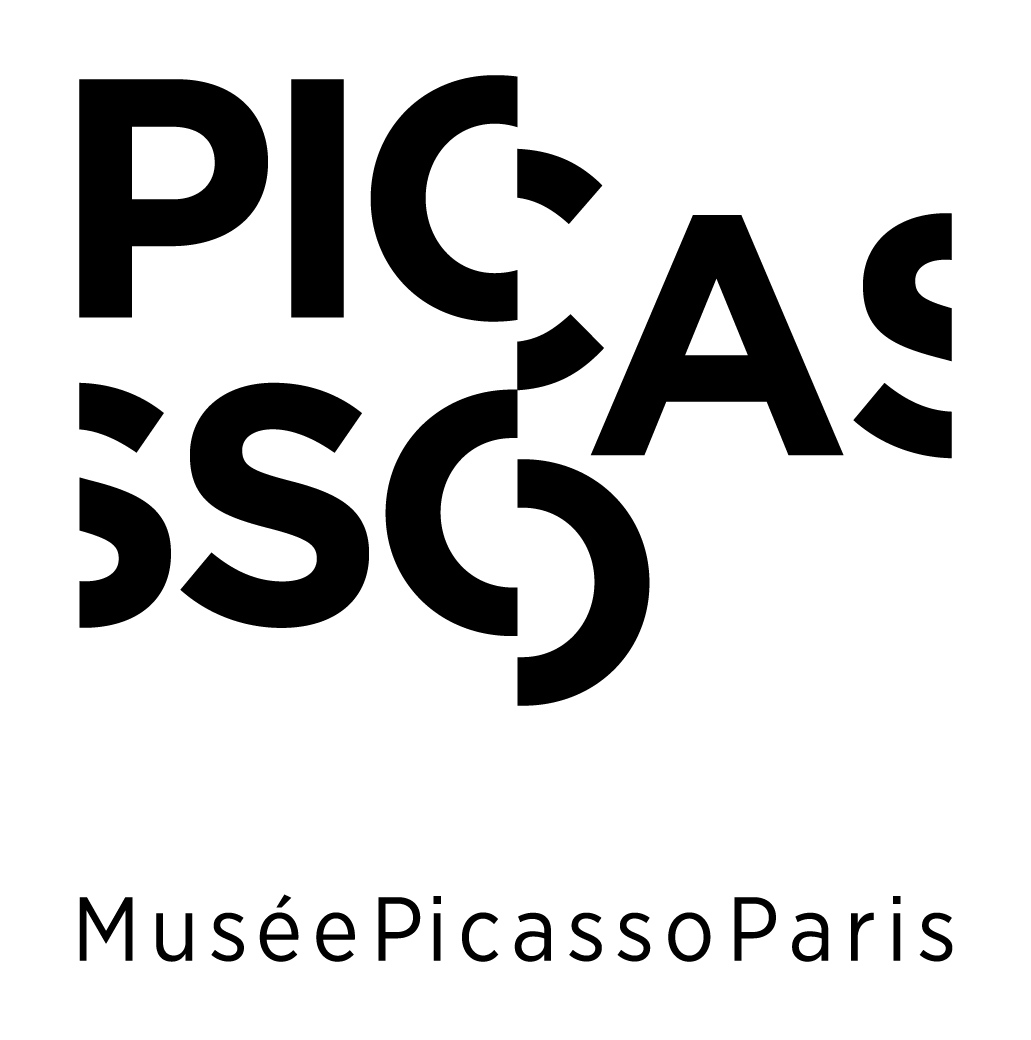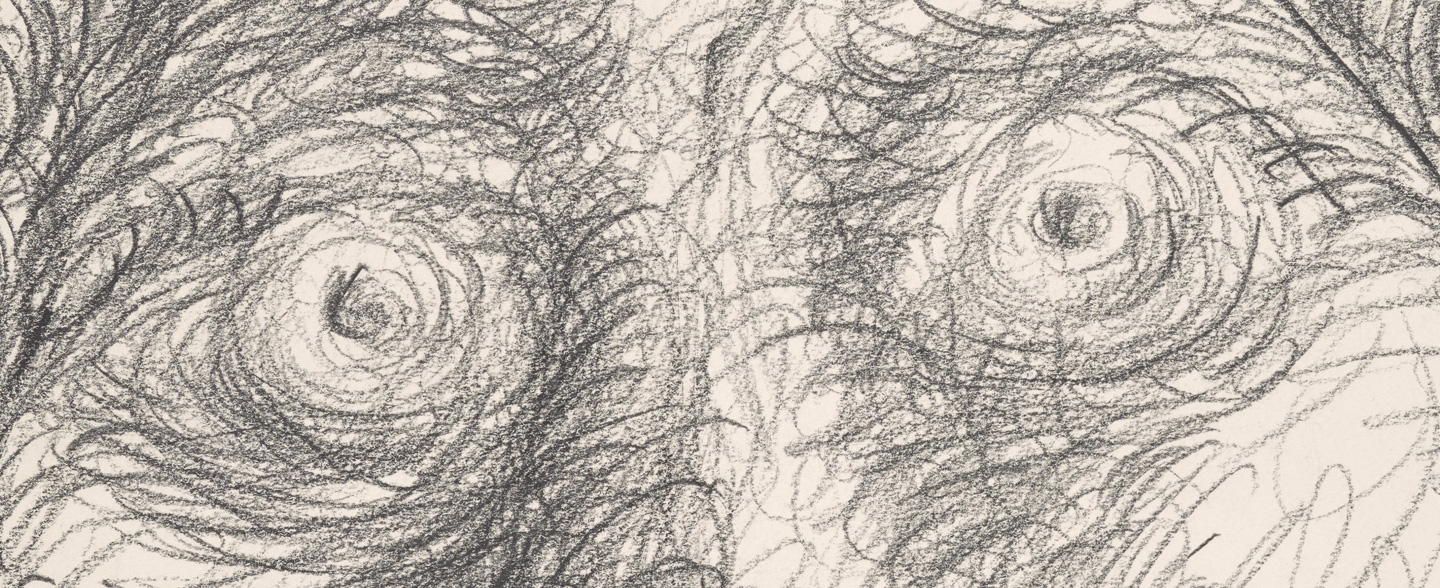What will the paint do when I'm gone? It will have to go over my body! It won't be able to pass by, will it?
In 1965, Picasso underwent a stomach operation that required a year of convalescence. Despite his advanced age, it would have been logical to believe that the artist would struggle to resume work, but his consistent production testifies to the contrary. This last artistic period ended with the death of the Spanish master on April 8, 1973, in Mougins. What was Picasso's last studio? What works were produced at the end of his life?
Mougins/ Notre-Dame-de-Vie
In 1965, following his stomach operation at the American Hospital in Neuilly, Picasso and his wife Jacqueline returned to the south of France. They settled in Mougins, a small town in the Cannes hinterland, near Vallauris. In 1961, Picasso acquired a farmhouse: Notre Dame de Vie. This was to be one of his last workshops and his last residence. He hung his favorite works on the walls of the farmhouse, such as the "Roofs of Barcelona" or the "Small landscape of Horta". Unlike his previous workshops, Jacqueline and Picasso isolated themselves, accepting only occasional visits. The artist, whose many friends had disappeared, lived a rather solitary period, focused on creation.
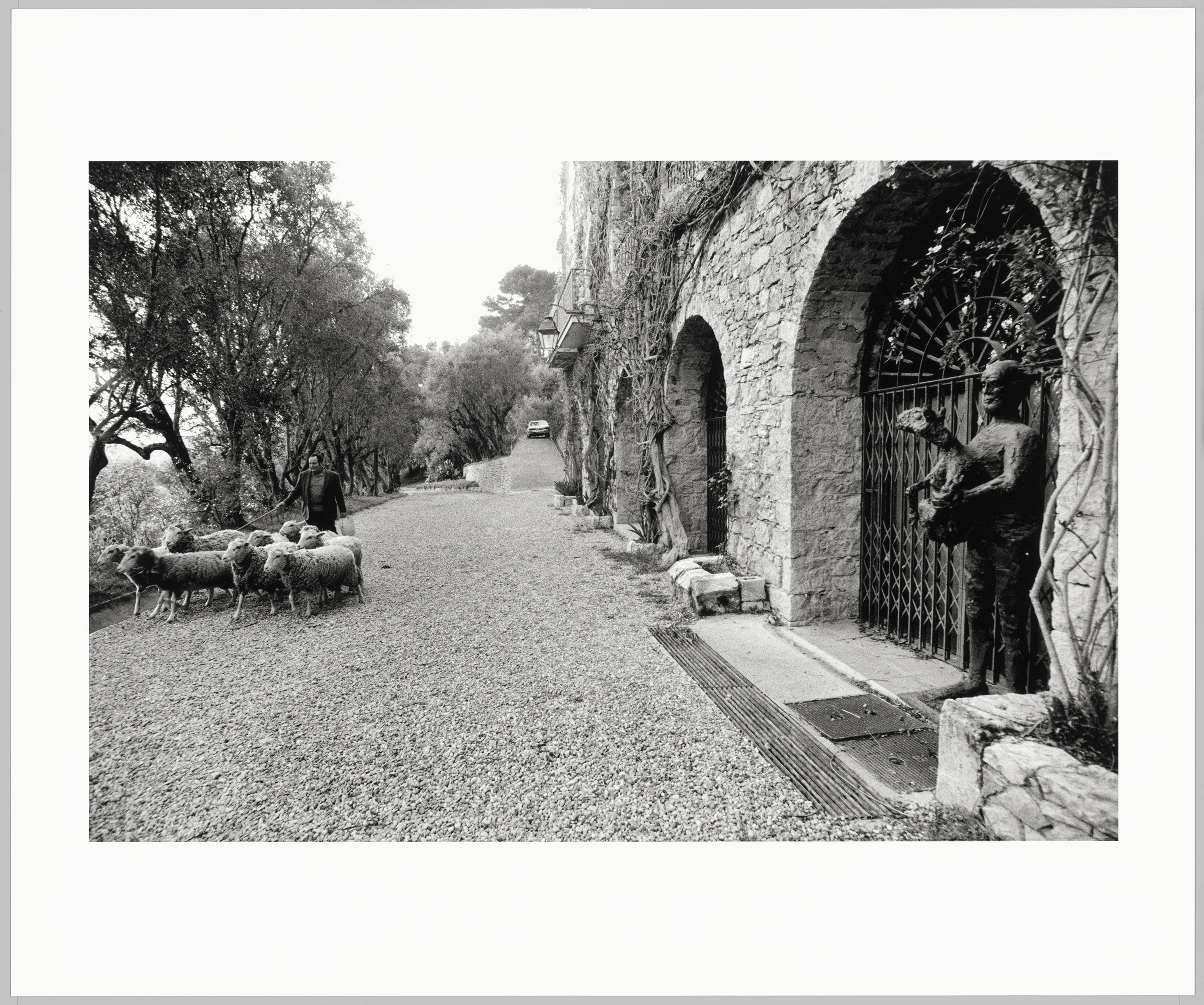
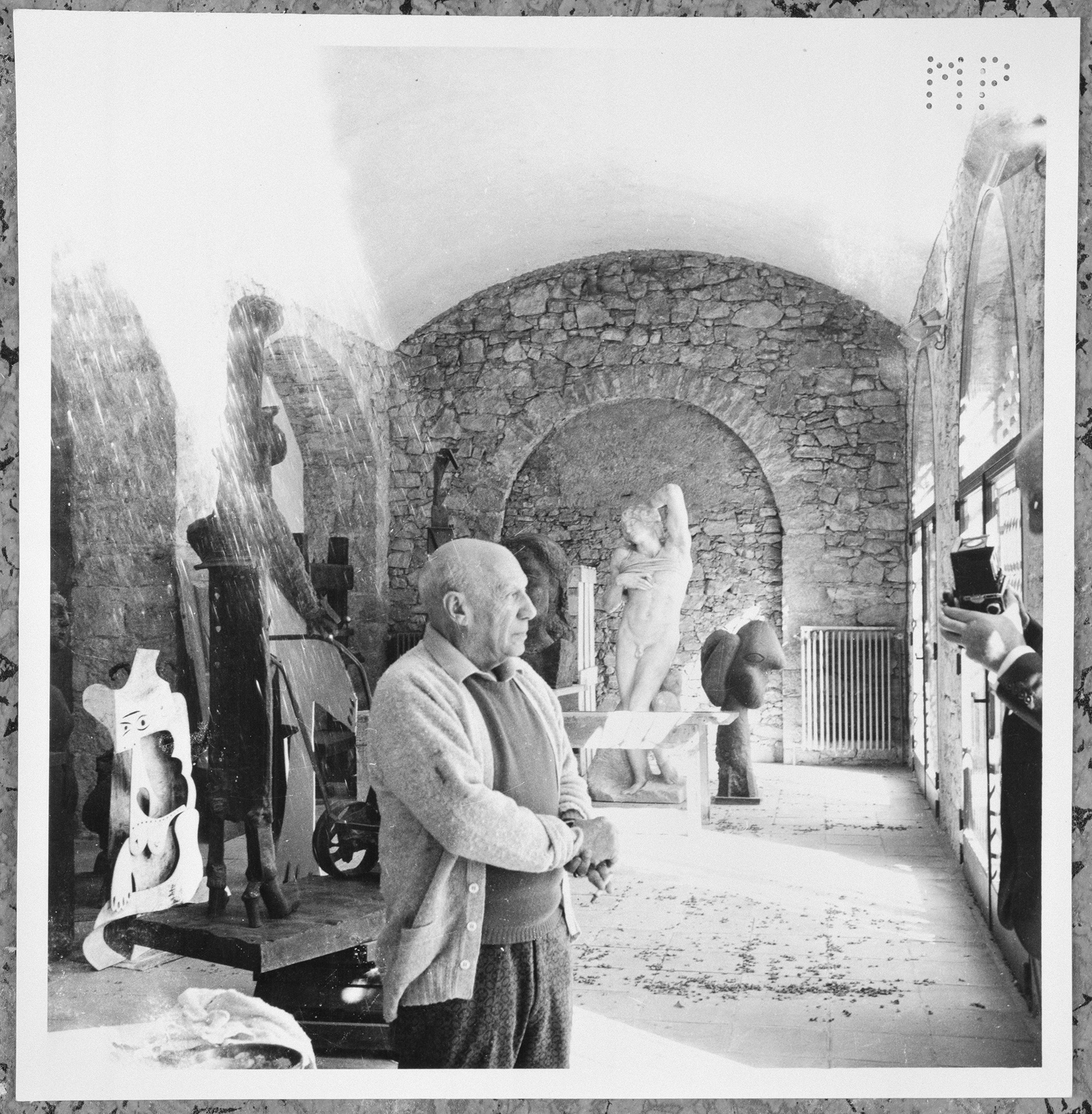
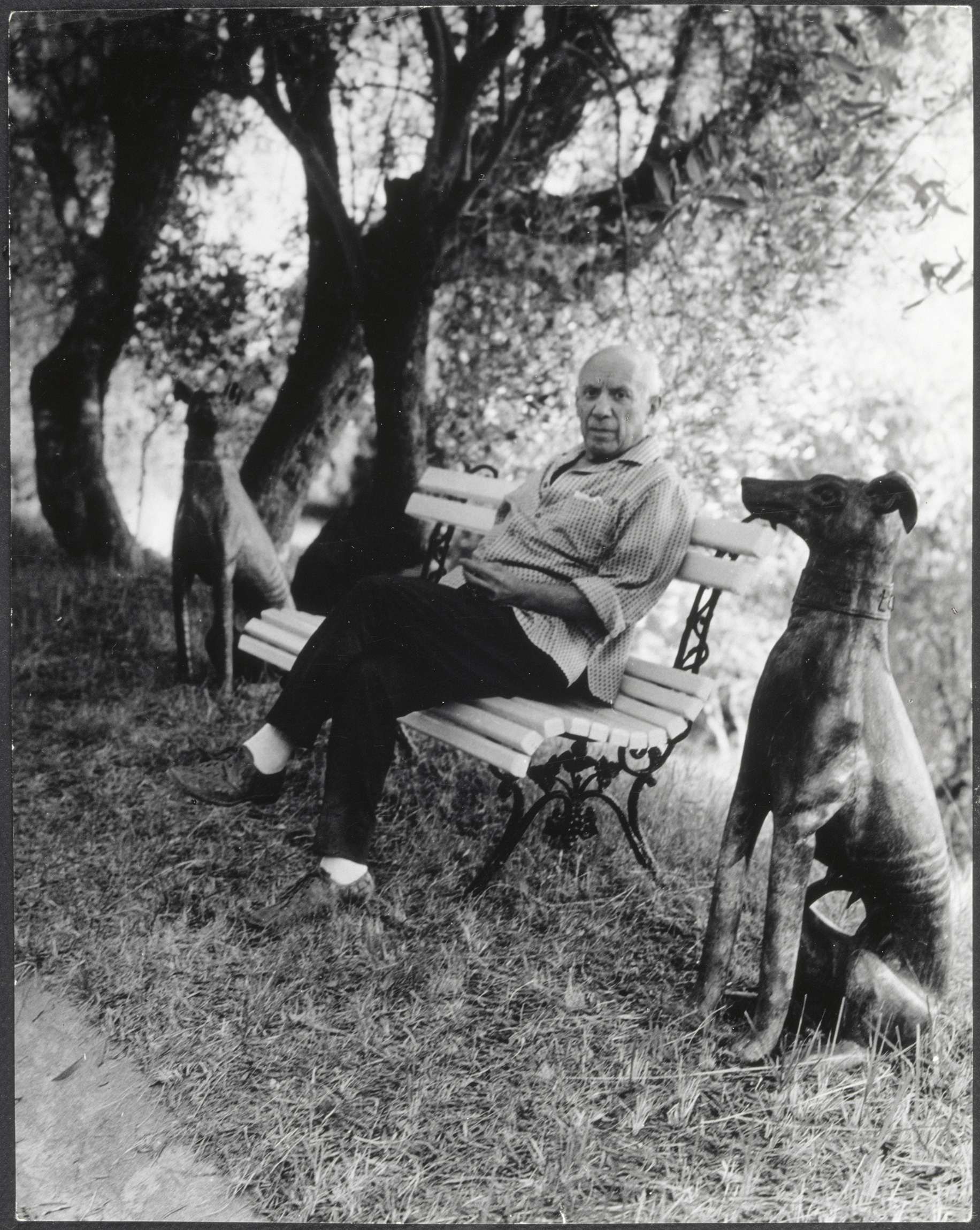
Erotic obsession
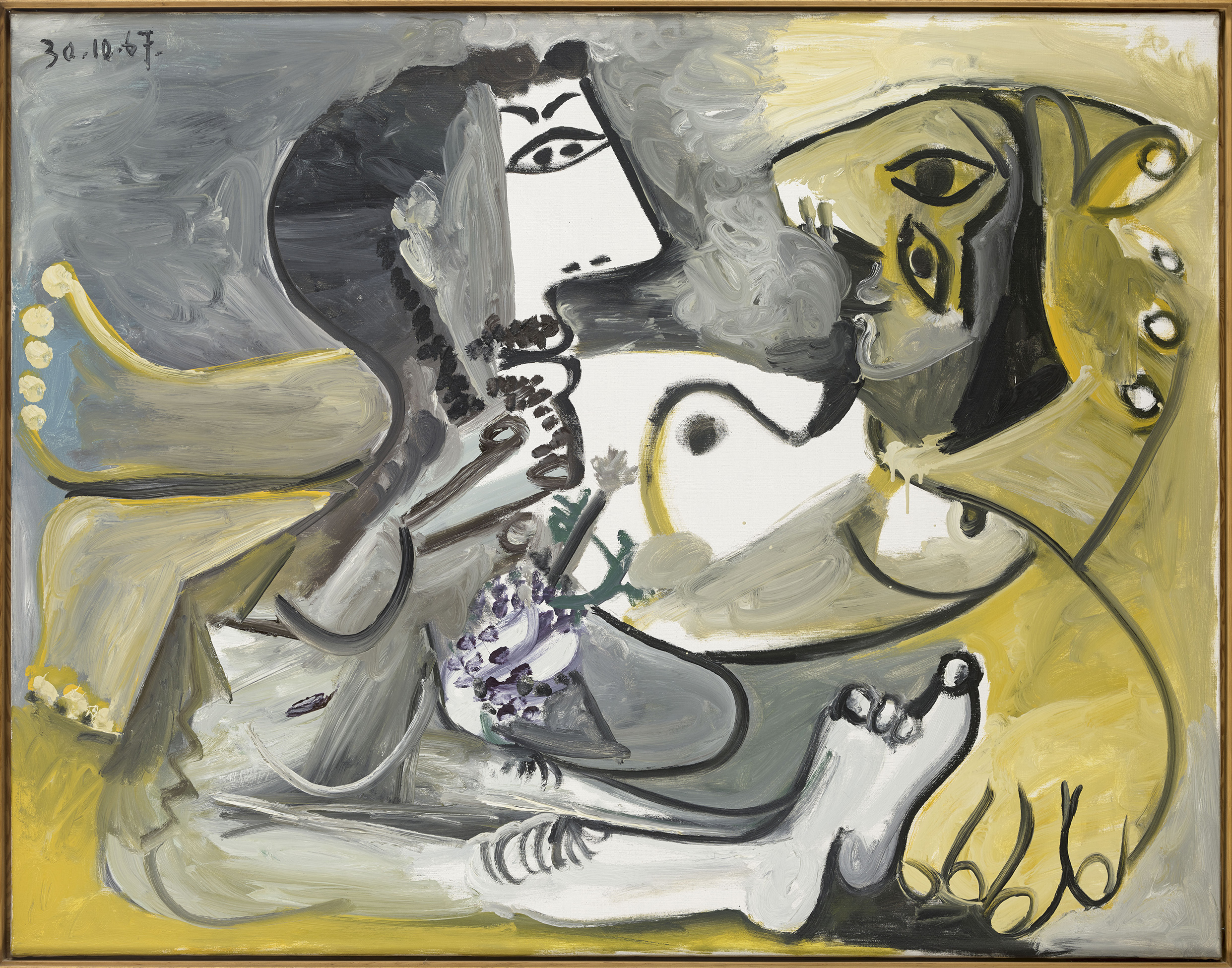
Artistic frenzy and freedom characterized the last years of Picasso's life. Indeed, between 1968 and 1972, he painted more than a hundred paintings and made hundreds of engravings. At over 85 years of age, and unlike other artists, his physical and mental health allowed him to continue to produce in large quantity.
It seems that Picasso detaches himself from the decorum to which the critics are attached and reveals his obsession for eroticism in his representations. The figure of the Spanish musketeer, young and vengeful, can also translate that of a man obsessed with women.
In 1966, the exhibition Tribute to Picasso was organized by Jean Leymarie at the Grand Palais and the Petit Palais in Paris. It was inaugurated by André Malraux, Minister of Culture since November 1959. The exhibition reveals to the general public many of the artist's sculptures.
Picasso then produced the large canvas The Couple, where he tackled the theme of lovers and embrace. This iconography of love and sexuality is repeated many times in the works of the end of his life.
When Jaime Sabartès, a long-time friend and assistant, died in 1968, he honored his memory by donating the entire "Meninas" series (fifty-eight paintings) and a portrait of Sabartès (from the blue period) to the Museu Picasso in Barcelona. This donation was completed in 1970 with works left at his family's home in Spain, dating from his early years, executed in A Coruña and then in Barcelona, as well as those produced in 1917 during his stay in Spain with the Ballets Russes.
The exhibition at the Palais des Papes
An important exhibition on Picasso took place in 1970 in Avignon, at the Palais des Papes. This artistic event, prepared by the couple Yvonne and Christian Zervos, a publisher who had collaborated with Picasso, brought together more than one hundred and sixty paintings and about forty-five drawings. The exhibition triggered a real scandal. Picasso's recent paintings invaded the walls of the palace, and shocked by the virulence of their colors, the eroticism of their subjects, and their giant formats. Misunderstood, these works contrast with the severe architecture of the palace. This exhibition also allows us to discover the latest works selected by the artist himself.
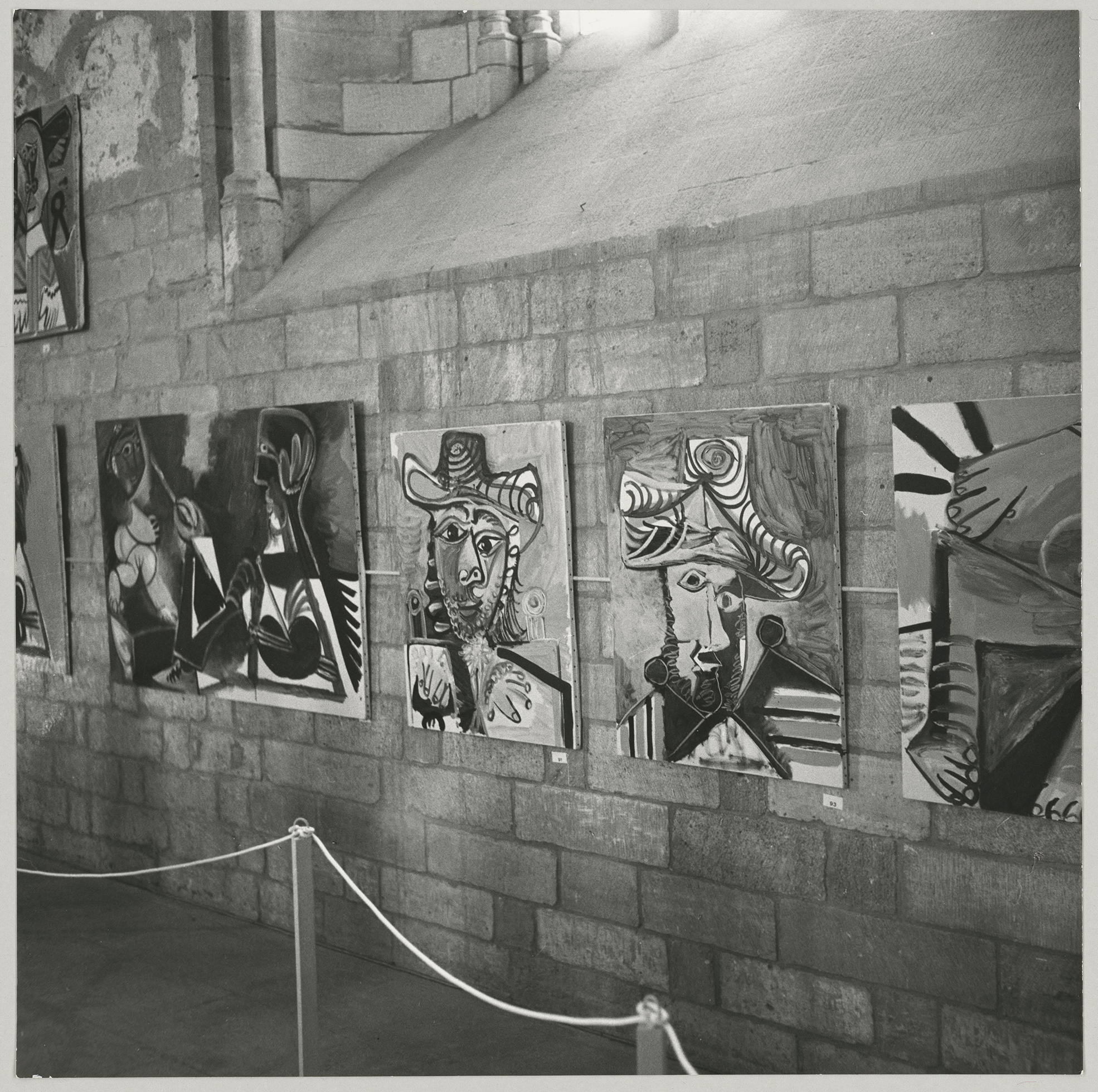
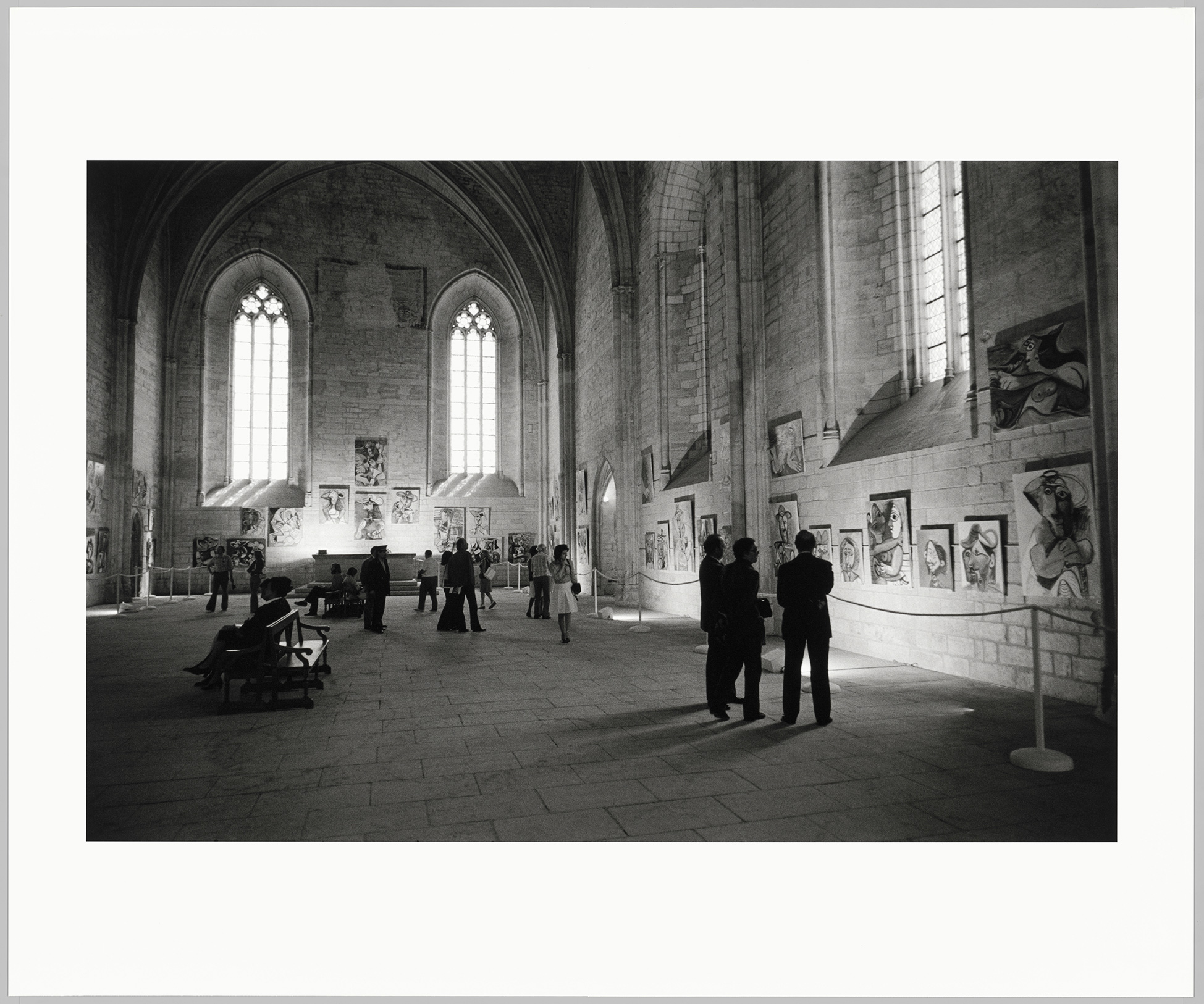
In October 1971, on the occasion of Picasso's 90th birthday, a selection of works from the French public collections was presented in the Grande Galerie du Louvre. Picasso painted a series of large-scale paintings that continued to explore themes throughout his life until his death. The year 1972 marked the creation of a series of drawn self-portraits, in which the head is displayed as a mask, sometimes taking on the appearance of skull and crossbones.
Drawings of recumbent nudes close Picasso's production, staging in a crude way old provocative odalisques embodying the corruption of flesh and the destruction of appearances.
The last moments of Picasso's life are recounted by the art critic Pierre Cabanne: "Early in the morning, Jacqueline called Dr. Pierre Bernal, Picasso's cardiologist in Paris; he had a very bad night. [...] He died at eleven forty-five on Sunday, April 8, 1973, at ninety-one years and seven months.”1.
1 « Le siècle de Picasso 4», Pierre Cabane, 1992, éditions Gallimard, Paris
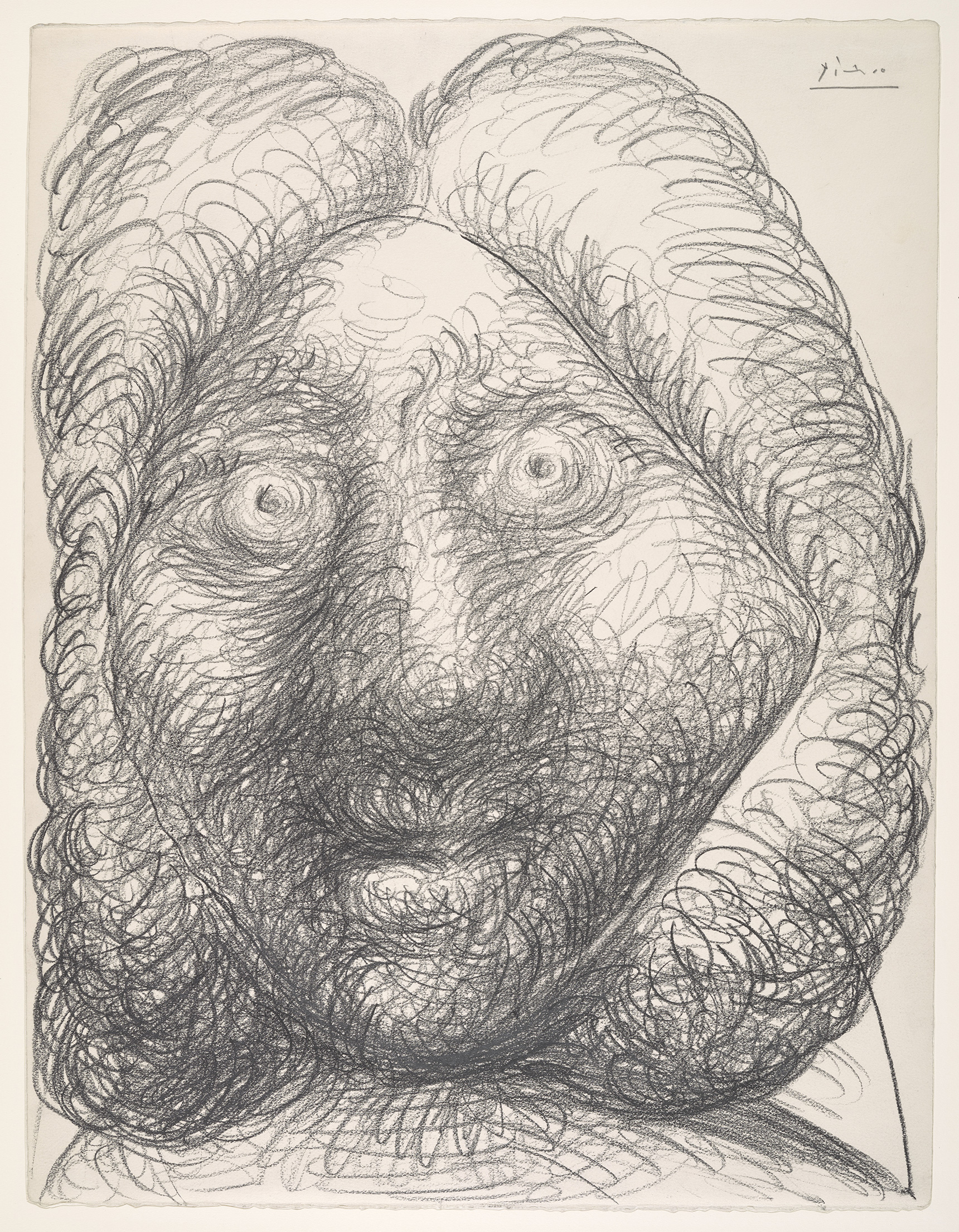
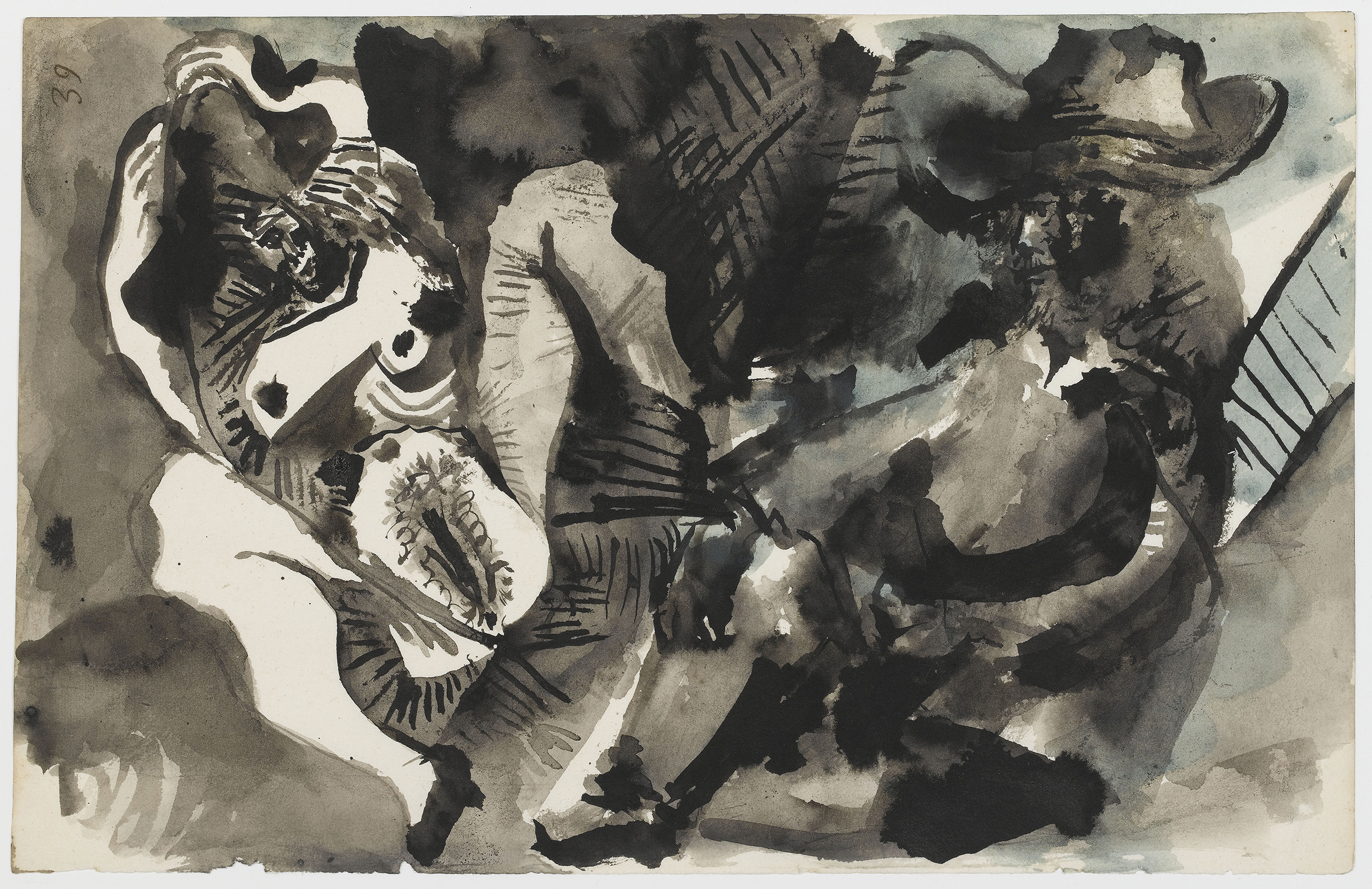
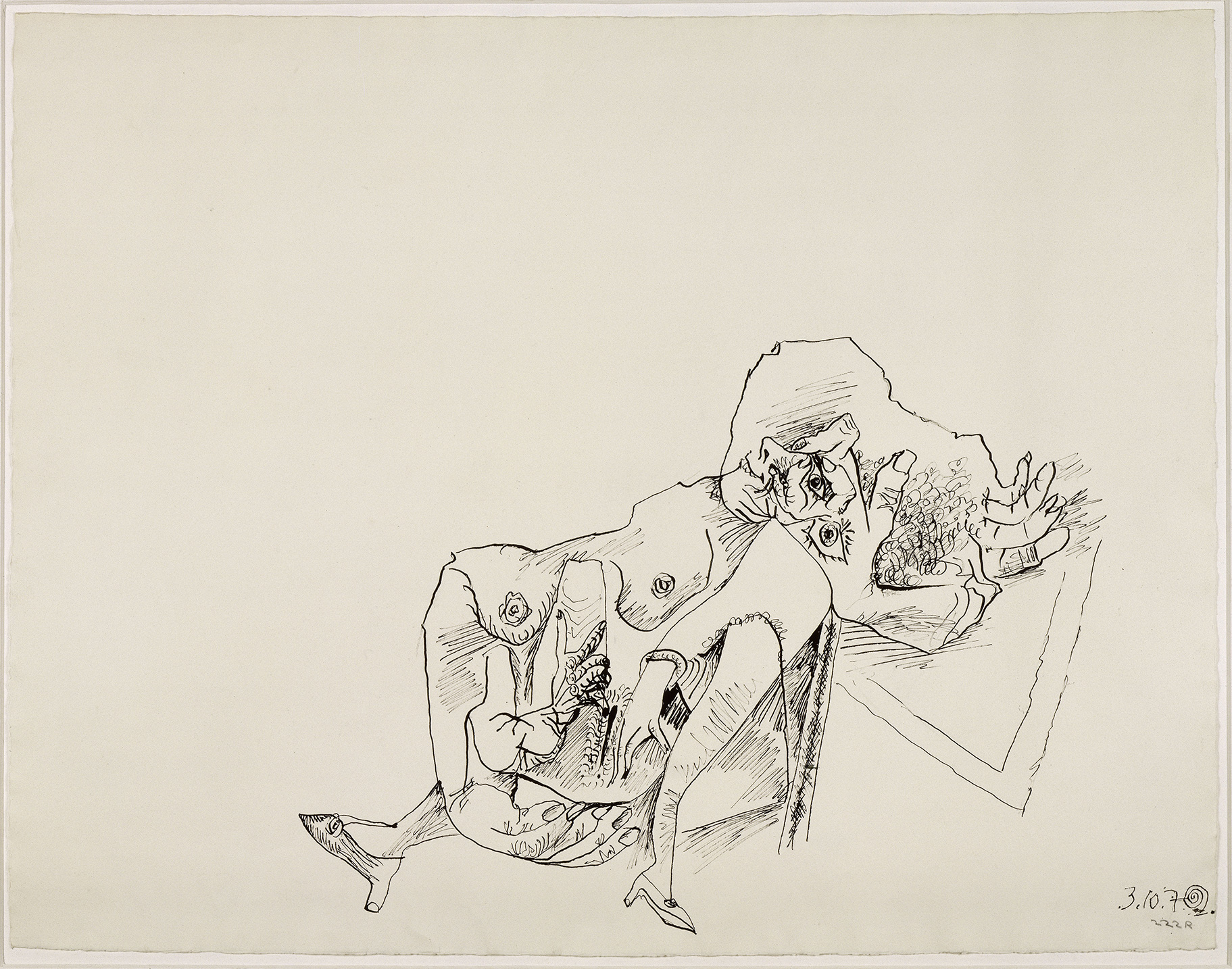
Pablo Picasso is buried on April 10, 1973, in the park of the castle of Vauvenargues.
